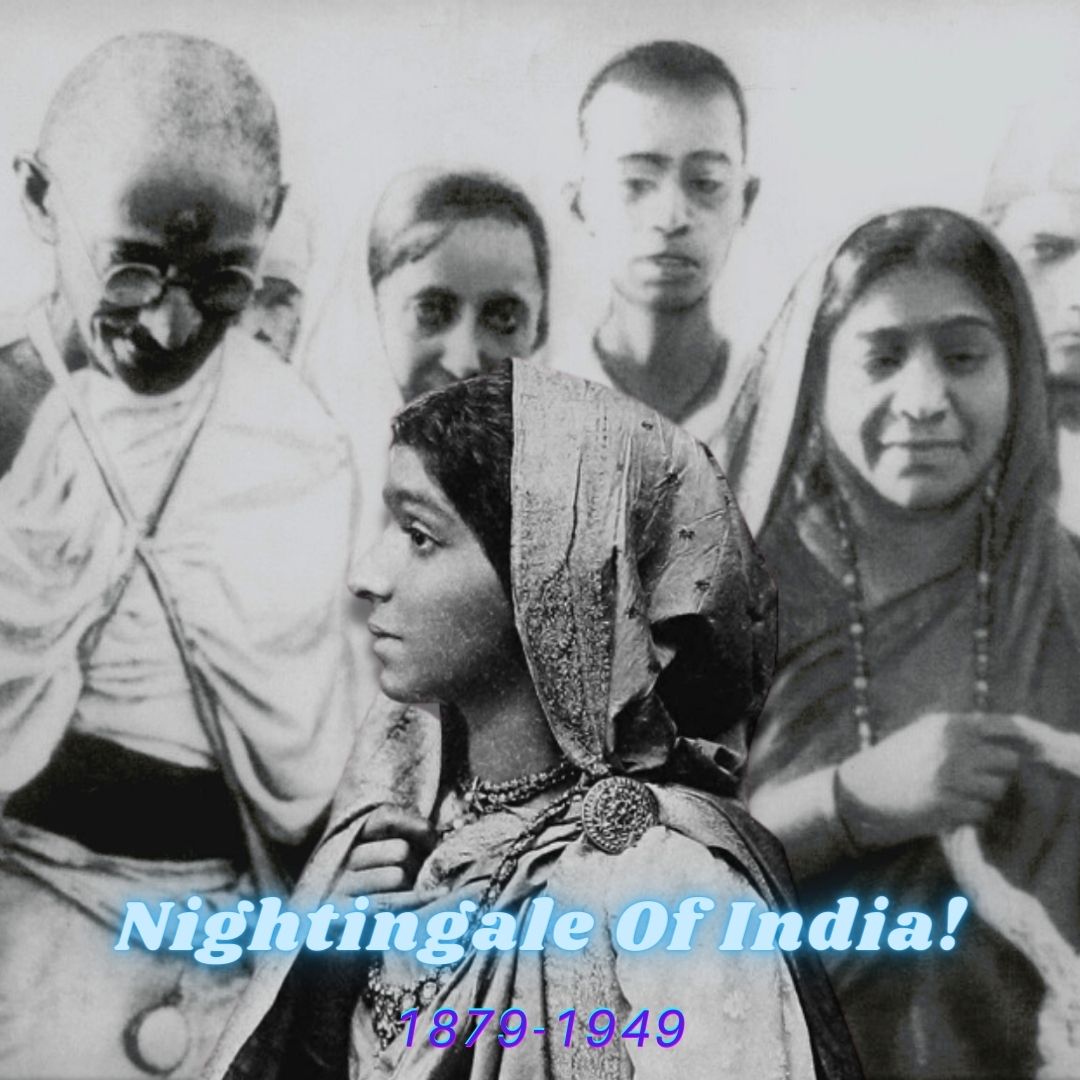Sarojini Naidu Death Anniversary: Remembering Independent India's First Female Governor
Writer: Varnika Srivastava
She is an upcoming millennial journalist, gushing in the 21st century to bring the authentic piece of information to the citizens.
India, 2 March 2022 9:54 AM GMT
Editor : Snehadri Sarkar |
While he is a massive sports fanatic, his interest also lies in mainstream news and nitpicking trending and less talked about everyday issues.
Creatives : Snehadri Sarkar
While he is a massive sports fanatic, his interest also lies in mainstream news and nitpicking trending and less talked about everyday issues.
A proponent of anti-imperialistic ideas, women's emancipation and civil rights, Sarojini Naidu was an inspirational figure in India's struggle for independence from colonial rule.
Every year, March 2 is remembered as the death anniversary of one of the prominent figures of India's struggle for Independence, Sarojini Naidu- also known as 'the Nightingale of India' or 'Bharat Kokila'. Sarojini Naidu was a famous poetess, freedom fighter, social activist and great speaker of her time.
A true inspiration to many, Sarojini was an exceptional student who knew Urdu, Telegu, English, Bengali, and Persian. Her extraordinary love of writing, which she developed at a young age, earned her a study abroad scholarship. And her volume of poetry, The Golden Threshold, was published in 1905 due to her creative abilities.
She was a feminist, political activist, and poet. She was the first Indian woman to lead the Indian National Congress. Her work as a poet earned her the moniker "India's Nightingale."
Some Fascinating Facts About Sarojini Naidu
Naidu began her literary career when she was 12 years old. Her play, 'Maher Muneer,' brought her fame. As a child, she wrote a 1,300-line poem called 'The Lady of the Lake.' On her return from London, India was hit by the plague endemic. She worked diligently with people affected by the disease. Recognising her impressive work, the British government honoured her with the "Kaisar-i-Hind" medal.
"Father of the Nation" Mahatma Gandhi dubbed her the "Nightingale of India" or "Bharat Kokila" because of her poems' colour, imagery, and lyrical brilliance. Sarojini Naidu was also the country's first female Governor and was later named Governor of the United Provinces (present-day Uttar Pradesh).
In 1917, she was a founding member of the Women's Indian Association. Later in 1942, the British imprisoned Naidu again for her involvement in the Quit India Movement.
India's First Female Governor!
Sarojini Naidu joined the Indian National Movement after Bengal's partition in 1905. Her interactions with Indian Independence Movement stalwarts such as Gopal Krishna Gokhale, Rabindranath Tagore, and Mahatma Gandhi inspired her to work for freedom and social development actively. Between 1915 and 1918, she lectured in various parts on social welfare, women's empowerment, and nationalism.
She joined Gandhi's satyagraha movement of nonviolent resistance to British rule after 1917. Naidu travelled to London in 1919 as a member of the All India Home Rule League as part of her ongoing efforts to advocate for independence from British rule. The following year, she took part in India's non-cooperation movement.
Naidu was the Indian National Congress's representative at the East African Indian National Congress in 1924. Naidu was the first female President of the Indian National Congress in 1925 and was a founding member of the All India Women's Conference in 1927. She visited the United States in 1928 to promote nonviolent resistance. Naidu also presided over the 1929 session of the East African and Indian Congress in South Africa.
In the year 1925, Sarojini Naidu stood as the President of the Indian National Congress Party, making her the first woman to hold that position. "In the battle for liberty, fear is one unforgivable treachery and despair, the one unforgivable sin," she said, full of hope and courage. She acknowledged Gandhi's nonviolent philosophy and was outspoken in spreading Gandhi's principles throughout the world. After India's independence in 1947, she was designated Governor of Uttar Pradesh. She was India's first female Governor, which she held until her death in 1949.
She was arrested, along with Gandhi, Jawaharlal Nehru, and Madan Mohan Malaviya, for participating in the 1930 Salt March. Sarojini was a key figure in the Civil Disobedience Movement and the Quit India Movement. She was repeatedly arrested by British authorities and spent more than 21 months (1 year and 9 months) in jail during that time.
 All section
All section














